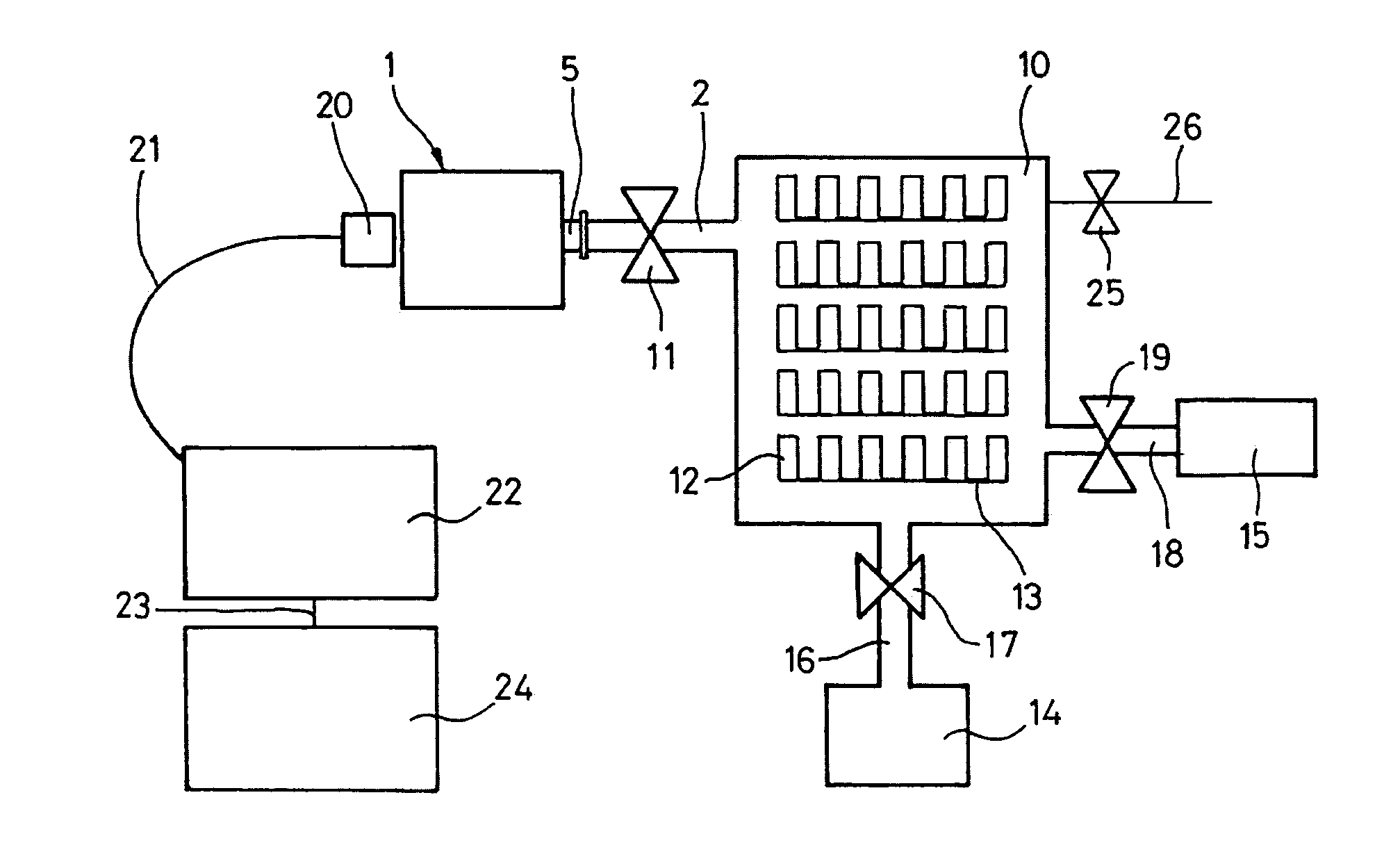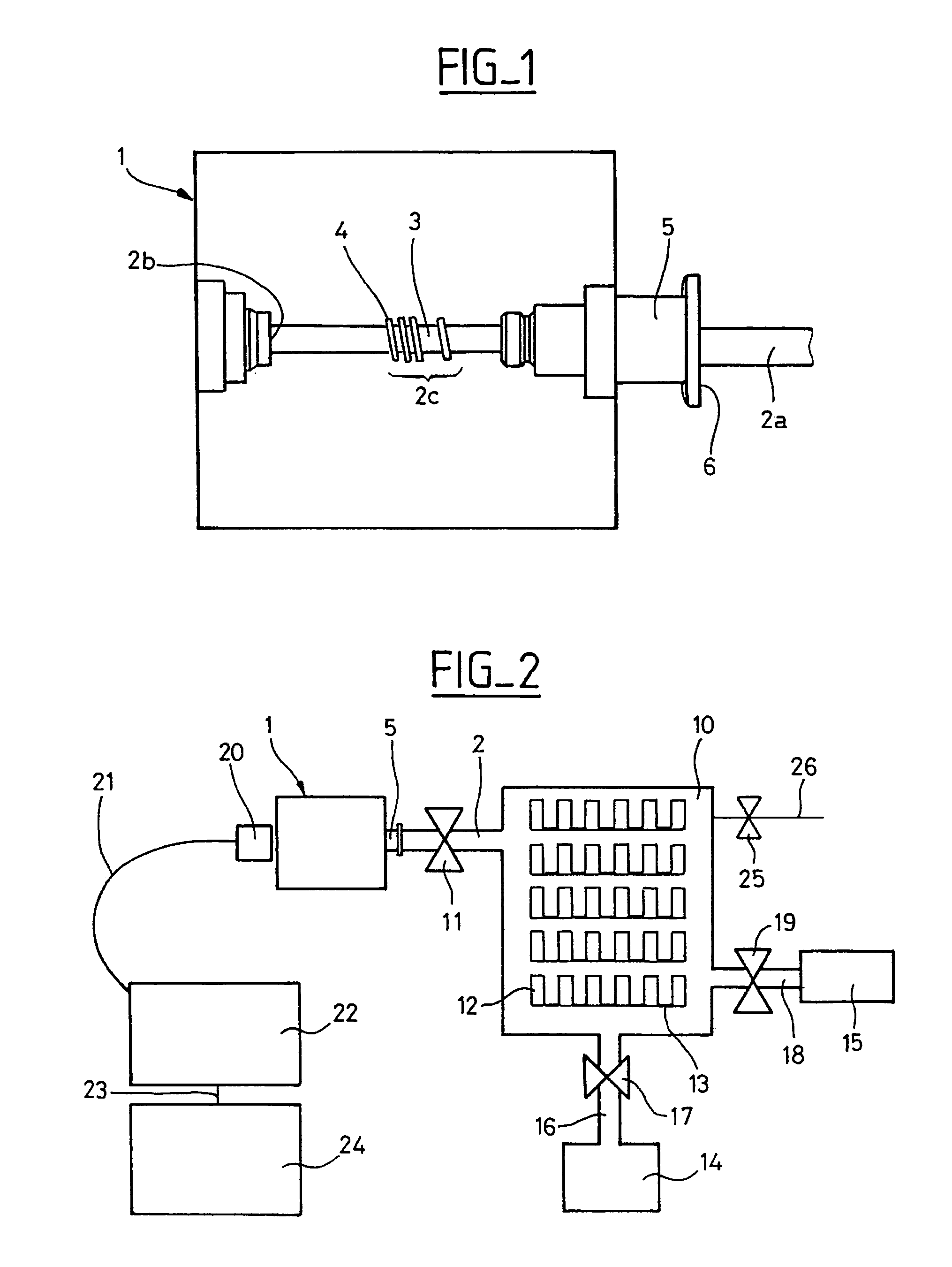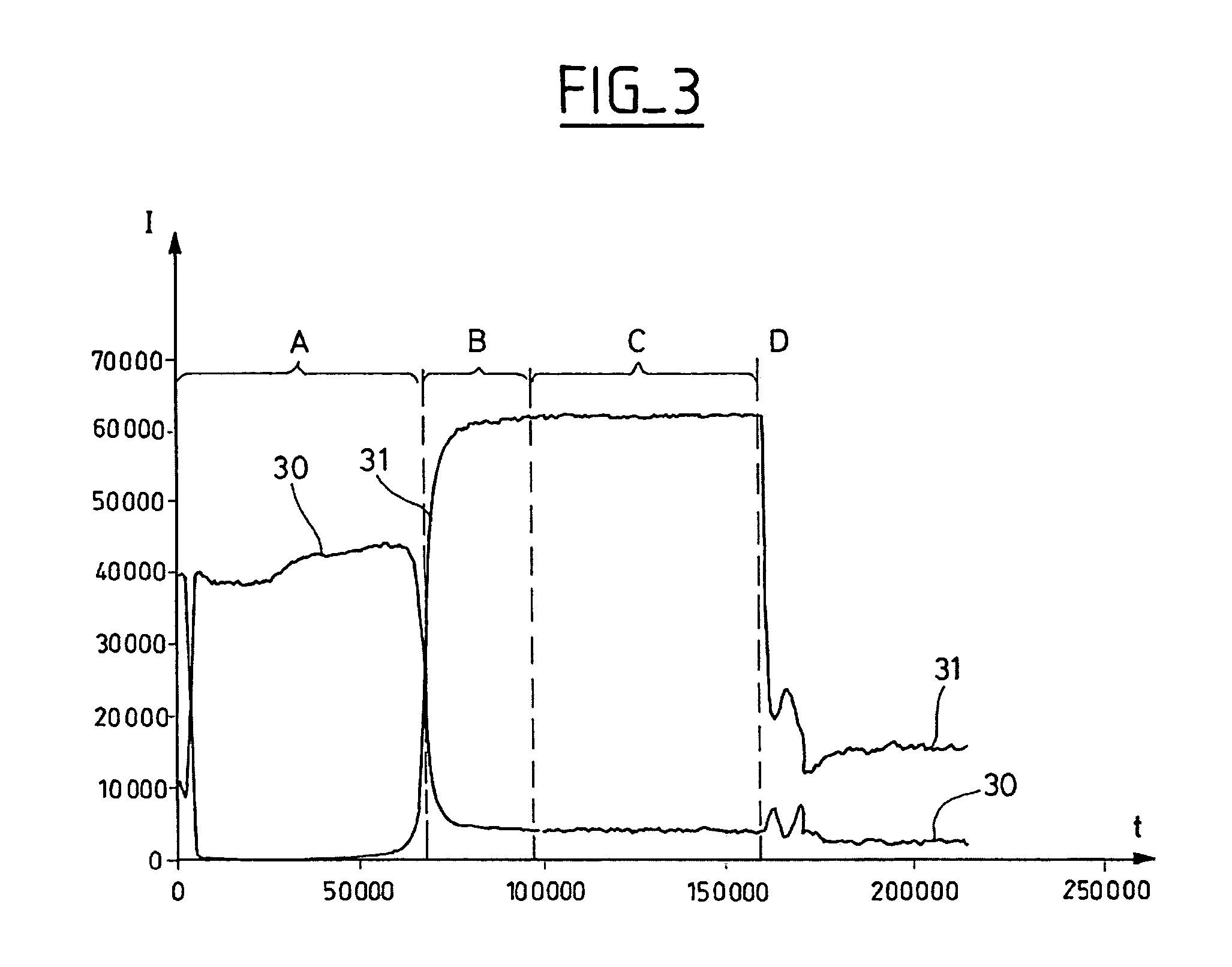Device and method for controlling dehydration during freeze-drying
a technology of dehydration control and device, which is applied in the direction of drying machines with progressive movements, separation processes, instruments, etc., can solve the problems of product deterioration, too short cycle, and product that is too moist, so as to reduce the number of rejects at the end of the cycle, improve productivity, and ensure the stability of the produ
- Summary
- Abstract
- Description
- Claims
- Application Information
AI Technical Summary
Benefits of technology
Problems solved by technology
Method used
Image
Examples
Embodiment Construction
[0044]FIG. 1 is a diagram of one particular embodiment of the ionization system 1 of a device of the invention. A quartz tube 2 has an open end 2a communicating with the enclosure in which freeze-drying takes place and a closed end 2b in the form of an aspherical lens enabling efficient collection of light. The plasma source 3 is formed in the tube 2 at the level of an induction solenoid 4. The solenoid 4, or excitation antenna, is wound onto the exterior of the tube 2 around the area of formation of the plasma or excitation chamber 2c.
[0045]The junction 5 (reference DN16 according to the ISO-KF standard) is of 316 stainless steel. A seal 6 provides the seal between the tube 2 and the junction 5. This seal 6 consists of a fluoroelastomer such as “Viton®” and is therefore able to withstand high temperatures.
[0046]The above apparatus is adapted to the sterilization requirements that exist in the field of freeze-drying (steam temperature 150° C. and steam pressure 2 bar): the only por...
PUM
 Login to View More
Login to View More Abstract
Description
Claims
Application Information
 Login to View More
Login to View More - R&D
- Intellectual Property
- Life Sciences
- Materials
- Tech Scout
- Unparalleled Data Quality
- Higher Quality Content
- 60% Fewer Hallucinations
Browse by: Latest US Patents, China's latest patents, Technical Efficacy Thesaurus, Application Domain, Technology Topic, Popular Technical Reports.
© 2025 PatSnap. All rights reserved.Legal|Privacy policy|Modern Slavery Act Transparency Statement|Sitemap|About US| Contact US: help@patsnap.com



